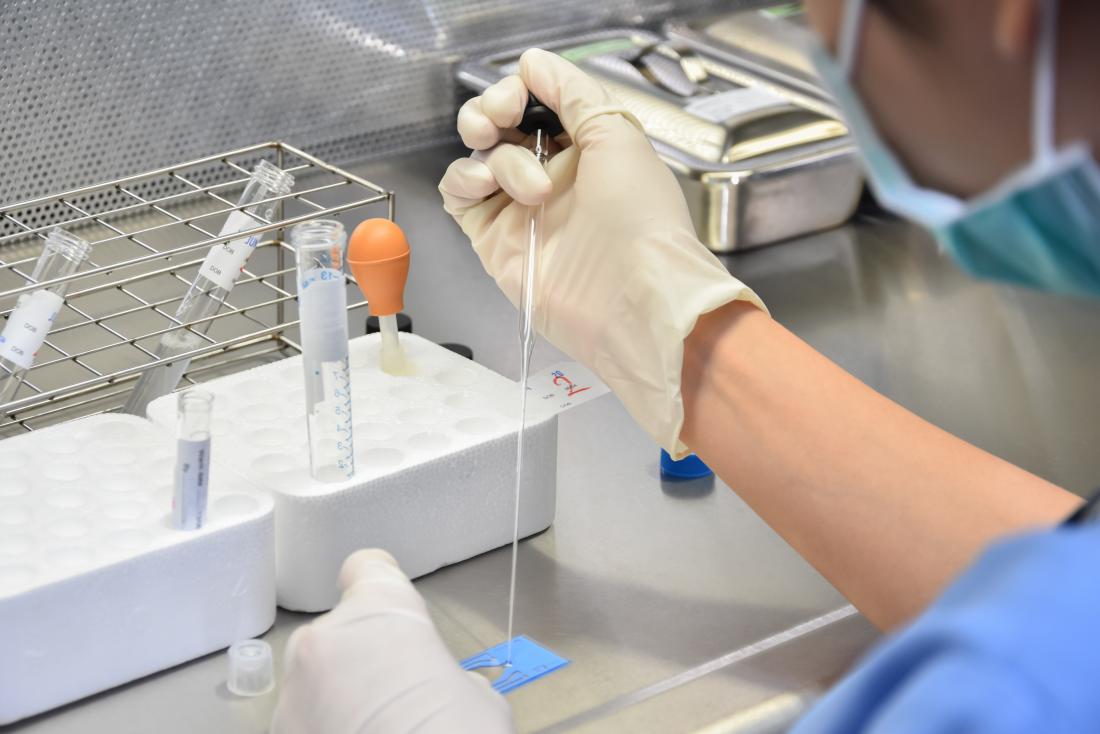
Purusho ke Virya ki Jaanch – Sperm is a reproductive cell in males, which is expelled with semen fluid or semen at the time of stimulation of a person. In humans, sperm determines the sex of a child. In this article, you will know what is sperm, how sperm are made, sperm structure, sperm count, sperm function. The function of the sperm is to fertilize the egg cell during the process of fertilization. Spermatozoa from a new zygote or zygote during the 9 months of pregnancy for the fetus to develop in the womb. Human sperm cells are haploid, which means they contain 23 chromosomes. Sperm or sperm aid in human reproduction. Human reproduction is not possible without these.
What is Sperm?
Sperm or sperm cells are male sex cells. The main function of this is to create a completely new organism in association with or joining female sex cells. The sperm is expelled with semen fluid during ejaculation. In males, sperm (spermatozoa) are produced in the testis, while in the female ovaries, oocytes or egg cells are produced. When an egg and sperm are united, they form a zygote, which develops into an embryo, and later into a fetus. The sperm cell in males determines the sex of the new organism. This means that the sperm can carry either the Y chromosome or the X chromosome, while the egg cells always have the X chromosome. Therefore, the presence of a boy or a girl depends entirely on the chromosome of the male.
How sperm are made?
There is a scrotum sac on the underside of the penis. The testicles produce the male hormones testosterone and sperm. Sperm is released from the urinary tract upon ejaculation. During sex, the penis is near the uterus (cervix), from where the sperm move forward and reach the ovum. The sperms produced inside the testicles move from the testes to the epididymis for maturation. Here sperm are stored for about 15-20 days if they are not released (by sex or masturbation).
Also Read – 17 Tips for Men to Get Healthy Sperm
Structure of Human Sperm
Scientist Antony van Leeuwenhoek was the first to describe the structure of a sperm cell in 1677. Generally, all parts of the mammary gland have spermatozoa structure in common, and there is very little difference in their structure. The human sperm is the only cell in which flagella is found. Sperm is mainly made up of three parts: head, midsection, and tail.
Head
The head has an oval-like structure, ranging in size from 5 to 8 µm (μm). It is made up of two parts:
Acrosome:
The size of this organ is 40% to 70% of the entire head of sperm, and it is located at one end of the sperm cell. It contains proteolytic enzymes that help to destroy the outer layer of the egg cell, allowing the sperm to enter the egg easily.
Nucleus: All 23 chromosomes of the sperm cells are found in the nucleus, which means it contains half the genetic information of the new organism. Only the nucleus of the sperm cell enters the egg cell. It is a major part of the sperm, as it unites with the nucleus of the egg to form a 46-chromosome cell, called a zygote.
Neck and middle-piece
- The middle part and neck are the parts of sperm that are found between the head and the tail. Their function is to connect the two ends of the sperm cell.
- Millions of mitochondria are arranged in spirals in the neck. Its main function is to provide the energy required by the flagellum to release the sperm into the female reproductive tract.

Tail
- The tail in sperm is a long structure, also known as a flagellum. Its main function is to provide snake-like motility to the sperm.
- The length of the tail is about 50 µm. This allows the oocyte to move at a swimming velocity of about 3 millimeters per minute.
- Defects or changes in the sperm tail can cause male reproductive problems, leading to asthenozoospermia most commonly.
The lifetime of human sperm:
After ejaculation, most sperm die within a few minutes outside the woman’s genital tract. If spermatozoa enter the female reproductive system (cervix), they can live for 1-2 days and up to 5 days at most. And they can survive up to 7 days under laboratory conditions.
Also Read – 17 Tips for Men to Get Healthy Sperm
Therefore, it can be concluded that the lifetime of human sperm is 24-48 hours, but their life depends on environmental conditions.
The function of a sperm:
The main function of sperm is:
- Maintaining ancestral genetic material
- The ovaries have to be activated.
- Determines the sex of the baby
- Together with the egg cell, forming a new organism called a zygote.
What Is Semen Analysis?
Semen examination is known by many names like sperm screening and semen analysis. In this test, the health and vitality of men’s sperm are tested. Semen is the fluid released from the penis during ejaculation in men, which contains sperm. Along with sperm, there are other substances like sugar and protein in men’s semen. Semen examination is measured as the main three factors:
- Sperm count
- Sperm size
- Sperm motility
Doctors often perform two or three different sperm tests to know about the health of sperm. According to the “American Association for the Clinical Chemistry” (AACC), semen should be tested seven times within three months and only once a day. Each time the semen is examined, the sperm count may also vary. Taking the average of the numbers found in all the samples tested can give the most accurate results.

Why are Semen Tested?
Why are semen tested? To check male infertility –
When a couple has difficulty in conceiving, the man’s semen is examined. This test helps the doctor to know the infertility of the male. If the cause of infertility is sperm deficiency or other sperm disorders, it can also be detected with the help of semen examination. To find out if vasectomy has been successful or not Men who have undergone a vasectomy have their semen tested to make sure they have sperm. In a vasectomy, the tube carrying sperm from the testis to the penis is closed midway. To ensure that there is no sperm in the semen after vasectomy, the doctor suggests a semen test once a month. Semen is examined for three months.
Also Read – Low Sperm Count : Diagnosis and Treatment
Before semen examination
What is done before semen is tested? The doctor will tell you what preparations you should do before getting the semen examined. To get accurate results of semen examination, it is necessary to follow the guidelines given by the doctor completely.
To get a good sample of semen, keep in mind:
- Do not ejaculate for 24 to 72 hours before getting tested (read more – treatment of early ejaculation)
- Do not consume alcohol, tea, coffee, and other drugs like cocaine and cannabis for two to five days before the test.
- If you are eating any type of herbal medicine then tell your doctor about them and if the doctor asks them to leave, then leave the medicines for the time prescribed by them.
- If you are eating any type of hormone medicines, then leave them as advised by the doctor.
Apart from this, if you take any type of medicine, supplements or any other product, then tell the doctor about them well before getting the test done.
What does the result of the semen test mean?
The normal result of semen examination –
When doctors read the results of the semen test, they have to take care of many things. The examination of semen after vasectomy only checks for the presence of sperm. But in a test of semen performed for infertility or reproductive problems, the semen is examined in depth. In the examination of semen, doctors carefully examine all the following factors.
The shape of sperm – For the results of the test of semen to be normal, more than 50 percent of sperm should be in normal shape. If a person has more than 50 percent sperm in the sample of semen whose shape is abnormal, then it can decrease his fertility. During the test, the sperm head, middle part, and tail are examined. It is also possible that sperm are not fully mature due to which they are unable to fertilize the egg.

Sperm motility – Even after 1 hour of ejaculation, more than 50 percent of sperm in the semen is normally required to move as the sperm has to reach the egg. A machine evaluates the motility of sperm and measures their mobility status on a scale of 0 to 4. The numeral 0 means that the sperm is not moving at all and the numerals 3 and 4 indicate that the sperm are normally moving.
Also Read – Low Sperm Count : Diagnosis and Treatment
PH Level – The normal pH test results in a pH level of 7.2 to 7.8. If the pH level is above 8.0 it can be a sign of infection. If the pH level falls below 7.0, it indicates that the semen sample is contaminated or the male ejaculatory tubes are blocked.
Semen Volume – To get an accurate and general result of semen examination, at least 2 millimeters of semen sample should be taken. If the quantity of the sample is small, then the sperm count fertilizing the egg will also be less in it.
Liquefaction – It takes 15 to 30 minutes before semen is diluted. Although the semen is very thick, its ability to be diluted helps the sperm to move. If the semen does not change into liquid form for 15 to 30 minutes, it affects male fertility.
Sperm count – The normal sperm test results are 20 million to 20 million. Tests that check sperm count are also known as sperm density. The lower the sperm count in the semen, the more difficult it is to conceive.
How Sperm Appears (Appearance) – In the normal result of a test of semen, the sperm are blurred white or blurred-transparent. If red or brown spots appear in sperm, then it is a sign of the presence of blood. If yellow spots appear in sperms, they indicate jaundice or side effects of a medicine.
